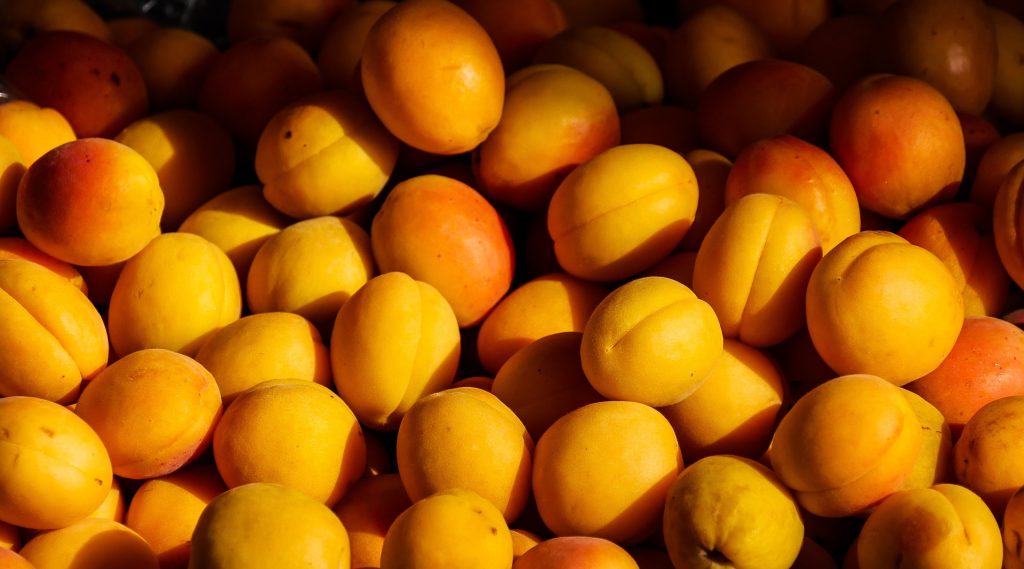Blog
Find articles that matter. From trading to shipping, trends to valuable goods, you can deep dive into everything you need.
Latest Posts
Blog
Coffee is a beloved beverage enjoyed by millions of people around the world. Whether it's a morning ritual or an afternoon pick-me-up, coffee has the power to awaken the senses and brighten the day. But what defines a truly great cup of coffee? The answer lies in the quality of the coffee itself.
The importance of coffee quality cannot be overstated. Good quality coffee not only tastes better, but it also has a positive impact on our health and well-being. High-quality coffee beans are packed with antioxidants, which can help reduce inflammation and prevent chronic diseases. Moreover, coffee has been shown to enhance cognitive function, boost metabolism, and improve mood.
However, not all coffee is created equal. The quality of coffee can vary widely depending on a variety of factors, from the origin and processing methods of the beans to the brewing techniques used to make the coffee. To truly experience the full potential of coffee, it's essential to understand the factors that define its quality. In this blog post, we'll explore the key factors that contribute to the quality of a good cup of coffee, from the bean to the brew.
Coffee Beans
The quality of coffee starts with the bean itself. Choosing high-quality coffee beans is essential for brewing a truly great cup of coffee. The flavor, aroma, and overall quality of coffee are largely determined by the quality of the beans used.
Importance of Selecting High-Quality Beans
Several factors impact the flavor and aroma of coffee beans. One of the most important is the altitude at which the beans are grown. Coffee plants thrive in high-altitude environments, where they receive plenty of sunlight and cool temperatures. Beans grown at higher altitudes tend to have a more complex flavor profile, with notes of fruit, flowers, and spices. Another factor that impacts the quality of coffee beans is the soil in which they are grown. The nutrients and minerals present in the soil can influence the taste and aroma of the coffee. For example, volcanic soil is known for producing coffee with a distinct, rich flavor.
Factors That Affect the Flavor and Aroma
Processing methods also play a crucial role in the quality of coffee beans. There are several different methods for processing coffee beans, including wet processing and dry processing. Each method has its unique characteristics and can impact the flavor and aroma of the coffee in different ways.
By selecting high-quality coffee beans that have been grown in ideal conditions and processed with care, you can ensure that your cup of coffee is bursting with flavor and aroma.
Roasting
Roasting is a crucial step in the coffee-making process that can greatly impact the flavor and aroma of the final product. During the roasting process, coffee beans undergo a chemical reaction that transforms them from green beans into the aromatic, flavorful beans we know and love.
The level of roast can have a significant impact on the flavor and aroma of coffee. Light roasts tend to be more acidic and have a milder flavor, while dark roasts have a stronger, more bitter taste. Medium roasts fall somewhere in between, with a balanced flavor and aroma.
In addition to the roast level, the duration of the roasting process can also affect the flavor and aroma of the coffee. Longer roasting times can lead to a stronger, more bitter flavor, while shorter roasting times can result in a milder, sweeter taste. Ultimately, the perfect roast level is a matter of personal preference.
Grinding
Grinding is a critical factor in the coffee-making process that often gets overlooked. Properly grinding your coffee beans can make a significant difference in the flavor and aroma of your coffee. The key to achieving the perfect grind is to match the grind size to the brewing method.
Different types of grinders can produce different grind sizes and shapes. Blade grinders tend to produce uneven grinds, while burr grinders can create a more consistent and uniform grind. The size of the grind can impact the rate of extraction during brewing, with finer grinds extracting more quickly than coarse grinds.
The right grind size is crucial for achieving the desired flavor and aroma of coffee. Too fine of a grind can result in over-extraction and a bitter taste, while too coarse of a grind can lead to under-extraction and a weak flavor.
Serving
Proper coffee serving is an often-overlooked factor in the coffee-making process, but it can significantly impact the overall coffee experience. Serving coffee correctly involves considering factors such as cup shape, temperature, and accompaniments.
How Cup Shape and Size Affect Your Coffee Experience
The shape and size of the cup can affect the way you perceive the flavor and aroma of the coffee. For example, a wider cup can allow more aromas to reach your nose, enhancing the flavor and aroma of the coffee. The temperature of the coffee is also crucial, as coffee that is too hot or too cold can negatively impact the taste.
Accompaniments such as milk, sugar, or pastries can also influence the coffee experience. While some prefer their coffee black, others enjoy adding milk or sugar. Choosing the right accompaniment can enhance the flavor and complement the coffee's unique characteristics.
Discover the Best Coffee with Turkish Goods: Your Supplier for High-Quality Coffee Beans
The quality of a cup of coffee is defined by a number of factors, from the origin and quality of the beans to the brewing and serving methods used. By understanding and paying attention to these factors, you can enjoy a truly exceptional cup of coffee.
As you explore high-quality coffee options, we invite you to consider Turkish Goods as your supplier of choice. With a wide selection of Turkish coffee, green coffee beans, roasted coffee beans, and granulated coffee beans, we are committed to providing our customers with the best possible products and services. Our expert team is dedicated to sourcing the highest quality beans and roasting them to perfection. Contact us today to learn more about our products and services.
Exporting is a great way for small businesses to grow their customer base and increase profits. However, there are several important considerations to keep in mind when venturing into the world of international trade. In this article, we'll provide some helpful tips for small businesses looking to export their products or services.
1. Research Your Target Market
Before you start exporting your products or services, it's crucial to conduct thorough research on your target market. This includes understanding the culture, language, and customs of the country or region you are exporting to. Understanding these factors will help you tailor your products or services to better meet the needs and preferences of the local market. Additionally, it's important to research any relevant regulations or certifications required to sell your products or services in the target market. This will help ensure that you are complying with any legal or regulatory requirements and avoid any potential legal issues.
2. Develop a Strong Brand Identity
A strong brand identity can help set your small business apart from competitors in the international market. This includes developing a unique logo, website, and marketing materials that resonate with your target audience. When developing your brand identity, it's important to consider the cultural differences and preferences of the target market. For example, certain colors, images, or symbols may have different meanings in different cultures. By understanding and incorporating these cultural differences into your branding, you can better connect with your target audience and establish a strong brand presence.
3. Create a Comprehensive Export Plan
Exporting requires careful planning and organization. Developing a comprehensive export plan that outlines your goals, target market, logistics, and finances is essential to ensuring a successful export venture. Your export plan should also consider any legal or regulatory requirements for exporting, as well as potential risks and challenges. By creating a detailed plan, you can better prepare for and manage any obstacles that may arise during the exporting process.
4. Partner with a Freight Forwarder
Partnering with a freight forwarder can help simplify the exporting process for small businesses. A freight forwarder can help with logistics, customs clearance, and shipping documentation, as well as provide valuable advice and support throughout the exporting process. They can also help you navigate the various regulations and requirements for exporting to different countries, which can be a complex and time-consuming process for small businesses without prior experience.
5. Understand Payment and Currency Exchange
Exporting involves dealing with multiple currencies and payment methods. It's important to understand the different payment options available and the associated fees and risks. Consider partnering with a financial institution that specializes in international trade to help manage currency exchange and payment processing. This will help ensure that you are receiving payments in the appropriate currency and that you are complying with any applicable regulations for international payments.
6. Build Relationships with Local Contacts
Building relationships with local contacts in the target market can help small businesses navigate cultural differences and better understand the needs and preferences of the local market. Consider attending trade shows or networking events to meet potential partners or customers. By building relationships with local contacts, you can also gain valuable insights into the local market and industry, which can help you tailor your products or services to better meet the needs of the target market.
7. Monitor Export Performance and Adjust the Strategy
Exporting is an ongoing process that requires continuous monitoring and evaluation. It's important to track your export performance and adjust your export strategy as needed to better meet the needs of the target market. This may involve tweaking your product offerings, adjusting your marketing strategy, or re-evaluating your pricing structure. By regularly monitoring and adjusting your export strategy, you can ensure that you are maximizing your export potential and achieving your export goals.
8. Consider Intellectual Property Protection
When exporting your products or services, it's important to consider protecting your intellectual property (IP) rights. This includes trademarks, patents, copyrights, and trade secrets. Depending on the target market, the regulations and requirements for IP protection may differ. It's important to research and understands the IP laws and regulations in the target market and considers registering your IP in those markets to prevent infringement and unauthorized use.
9. Understanding Cultural and Language Differences
Cultural and language differences can play a significant role in the success of your export venture. It's important to understand the cultural norms and preferences of the target market and adapt your products or services accordingly. Language can also be a barrier to communication and understanding. Consider translating your marketing materials, product descriptions, and customer service communications to better connect with your target audience.
10. Develop a Strong Online Presence
A strong online presence can help small businesses reach a wider audience and establish credibility in the international market. This includes having a professional website, a social media presence, and an online marketing strategy. When developing your online presence, consider the cultural differences and preferences of the target market and adapt your messaging and branding accordingly. Additionally, consider partnering with local influencers or bloggers to help promote your products or services to their audience.
11. Understand Export Regulations and Compliance
Exporting can involve a variety of regulations and compliance requirements, including customs regulations, trade agreements, and export controls. It's important to understand and comply with these regulations to avoid any legal or financial issues. Consider partnering with a legal or trade expert to help navigate the regulations and requirements for exporting to different countries.
12. Evaluate Financing Options
Exporting can require significant upfront costs, including logistics, marketing, and legal fees. It's important to evaluate your financing options and consider partnering with a financial institution that specializes in international trade to help manage these costs. This may include exploring financing options such as export credit insurance, letters of credit, or export factoring.
In summary, exporting can be a lucrative opportunity for small businesses to expand their customer base and grow their revenue. However, it's important to understand the complexities and challenges involved in the exporting process and take the necessary steps to prepare and mitigate any risks. By following these tips and seeking guidance from experienced professionals, small businesses can successfully enter the international market and achieve their export goals.
Road transportation is the transportation activity carried out via land. This type of transportation is frequently preferred, especially for the transportation of commercial goods.
Road transportation is carried out with different vehicles. Vehicles such as trucks, trailers, and vans are the most commonly used vehicles for commercial transportation. These vehicles are generally used for freight transportation and can carry out shipment operations quickly.
Advantages of Road Transportation
Road transportation has many advantages. These advantages include factors such as fast and effective transportation, a decrease in transportation costs, flexibility, and service quality.
Fast and Effective Transportation
Road transportation enables materials to be transported quickly and effectively. Road transportation vehicles allow for quick loading and unloading of goods. This helps to speed up shipment operations.
A Decrease in Transportation Costs
Road transportation is a more cost-effective option compared to other transportation methods. Therefore, it is one of the most preferred methods for commercial transportation. In addition, the decrease in transportation costs can also lower the selling prices of products, thus increasing the purchasing power of customers.
Flexibility
Road transportation is a more flexible option compared to other transportation methods. This type of transportation allows for the transportation of various goods in different sizes and weights. Additionally, the timing of transportation operations can be easily adjusted.
Service Quality
Service quality is also among the advantages of road transportation. Various security measures are taken to transport goods safely in this type of transportation. Additionally, transportation operations are made more efficient by using modern logistics methods.
Why is Road Transport Important for Turkish Goods?
Türkiye is present in the global market with a variety of products it produces in many industries. Road transport is essential for the delivery of these goods. Turkish goods can be delivered to consumers quickly and safely through road transport. Moreover, Turkish companies can gain a competitive advantage thanks to road transport.
Many logistics companies in Türkiye specialize in road transport. These companies make transportation operations more efficient by using modern vehicles and technological equipment. Additionally, Türkiye's geographical location is an important link between Europe and Asia, allowing Turkish companies to reach the global markets faster.
Road transport is one of the most common and important methods for transporting commercial goods. Its advantages include being fast, flexible, and cost-effective. It is also essential for the transportation of Turkish goods, and logistics companies in Türkiye have expertise in this area. Road transport provides Turkish companies with a competitive advantage and enables Türkiye to reach global markets faster through Turkish Goods.
Pears are a versatile fruit that can be used for both sweet and savory dishes. They can be eaten fresh, as well as used in products like jams, compotes, and juices. Because of this, pears are a popular commodity worldwide. But which countries are the leaders in pear exports? In this article, we will examine the top pear-exporting countries.
Türkiye
Türkiye is not only known for its rich culture and stunning landscapes but also for being one of the leading pear exporters in the world. The country has a diverse geography that is suitable for producing a wide range of pear varieties, such as the Anjou, Bosc, and Conference pears.
According to recent data, Türkiye exports around 140,000 tons of pears annually, making it the fourth largest pear exporter worldwide. The country's pear exports account for a significant portion of its total fruit exports. The majority of the pears produced in Türkiye are exported to Russia, Germany, and the United Kingdom.
Türkiye's pear exports are supported by its modern production techniques and advanced technologies, ensuring high-quality produce that meets international standards. In recent years, Turkish pear exports have shown significant growth due to the government's efforts to increase the country's agricultural exports.
In addition to its high-quality produce, Türkiye's strategic location between Europe and Asia has also played a crucial role in its pear exports. The country's transportation infrastructure, including seaports and airports, allows for quick and efficient delivery of its products to international markets.
In conclusion, Türkiye is a major player in the global pear export market, with a growing industry supported by modern production techniques and advanced technologies. With its strategic location and high-quality produce, Türkiye is poised to remain a significant player in the pear export market for years to come.
Argentina
Argentina, the land of tango, football, and delicious beef, is also one of the major players in the global pear export market. The country's diverse climate and rich soil make it an ideal location for growing a variety of pear cultivars, such as the Williams, Packham's Triumph, and Abate Fetel pears.
Argentina exports about 200,000 tons of pears annually, making it the second-largest pear exporter in the world. The country's pear exports contribute significantly to its economy and are a source of pride for the local growers and producers.
The United States, Canada, and Europe are Argentina's main pear customers. The country's proximity to these markets, coupled with its high-quality produce and competitive prices, have made it a preferred source of pears for many importers. Argentina's pear exports are primarily shipped fresh, but the country also produces pear-based products such as juice and jam.
The Argentine government supports the country's pear industry through various initiatives and subsidies, promoting sustainable production practices and facilitating exports. These efforts have helped the country's growers and producers to achieve international recognition for their high-quality produce.
Italy
Italy is one of the leading pear-producing countries worldwide and is also a significant pear exporter. The country exports around 160,000 tons of pears annually. Italy's biggest pear customers include Germany, France, and Spain.
China
China is the leader in pear production worldwide and is also the largest pear exporter. According to recent data, China exports approximately 550,000 tons of pears annually. Chinese pear producers export their products to Asia, Europe, and the United States.
Chile
Chile is one of the leading pear-producing countries worldwide and is also a significant pear exporter. The country exports around 100,000 tons of pears annually. Chile's biggest pear customers include the United States, Canada, and European countries.
Pear exports are an important industry for many countries worldwide. China, Argentina, Italy, Türkiye, and Chile are among the countries that lead the world in pear exports. The growth in production and exports by these countries provides a promising future for the pear industry. However, climate change, disease, and other factors can negatively impact pear production and exports. Therefore, pear exporters and producers must continuously strive to improve the industry and work towards sustainability.
We all want our children to be healthy, happy, and successful as they grow up. One of the best methods to ensure their success is to provide them with the appropriate tools and toys for learning and development. Here's when educational toys come in handy.
Toys meant to teach children specific abilities such as problem-solving, creativity, and critical thinking are referred to as educational toys. They are not only entertaining and interesting, but they also help a child's cognitive, emotional, and social development. In this blog post, we will look at the most recent educational toy trends that are sweeping the market.
STEM Toys
STEM Toys are the most recent trend in the world of toys and playtime. They are toys that promote learning and skill development in the fields of Science, Technology, Engineering, and Mathematics. Children may learn about science, technology, engineering, and math in a fun and participatory way using STEM toys. These toys are not only instructive but also amusing, making them an excellent tool for parents and instructors to engage youngsters while also assisting them in the development of important abilities.
STEM toys come in a range of shapes and sizes, ranging from construction sets and kits to computer programming games and science experiments. They are intended to assist children in developing problem-solving abilities, critical thinking abilities, and creativity. Hands-on experiments and activities teach children about physics, chemistry, biology, and other sciences, while games and riddles teach them about coding and programming.
Advantages of STEM Toys
STEM toys have various advantages. They can help children develop a passion for learning as well as an interest in the world around them. They also aid in the development of crucial abilities such as problem-solving, critical thinking, and creativity in children. STEM toys can also assist children prepare for future vocations in science, technology, engineering, and mathematics.
STEM toys are appropriate for children of all ages, ranging from toddlers to teenagers. Toys range in complexity from simple building blocks to complicated robotics kits. Parents and teachers can choose toys based on the child's age, interests, and level of ability. STEM toys can also help parents and children bond and spend valuable time together.
Finally, STEM toys are a fun and interactive way for youngsters to learn about science, technology, engineering, and math. They assist youngsters in developing vital skills such as problem-solving, critical thinking, and creativity, as well as preparing them for future employment. With a diverse selection of toys accessible, there is something for every child, making STEM toys an excellent investment for both parents and educators.
Coding Toys
Coding toys are an excellent way to expose youngsters to the world of technology and programming in an engaging and interactive manner. These toys are intended to teach youngsters the fundamentals of coding, logic, and problem-solving through play. Children can use coding toys to learn to write code, program robots, control drones, and even develop their own video games. These toys come in a variety of styles, ranging from simple coding blocks to more complicated programming kits.
The coding robot is one of the most popular coding toys. These robots may be taught to walk, dance, and even speak. They are equipped with a number of sensors and may be operated via a smartphone or tablet app. The coding board game is another popular coding toy. These games, which may be played alone or with friends and family, teach children the fundamentals of coding through gameplay.
Coding toys are not only entertaining and interesting, but they also provide several advantages to youngsters. They aid in the development of problem-solving abilities, reasoning, and critical thinking. Children can utilize code to build their own video games, animations, and stories, which encourages creativity and imagination. Furthermore, as technology and programming become more prevalent in our daily lives, coding toys can help prepare youngsters for the future.
Overall, coding toys are a great investment for parents who wish to introduce their children to technology and programming. They are not only informative and beneficial but also enjoyable and amusing for children of all ages. Children can learn essential skills with the correct coding toy that can help them for years to come.
Interactive Toys
For good reason, interactive toys are the newest craze in the toy market. These toys provide a one-of-a-kind experience that engages children on a whole new level. Interactive toys, as opposed to traditional toys, are intended to stimulate active learning and growth through play. The possibilities are boundless, ranging from robots and drones to smart toys and virtual reality games. Children can explore and learn with interactive toys in a fun and engaging way that promotes creativity, problem-solving skills, and social connection. As technology progresses, interactive toys become more sophisticated and lifelike, delivering a more immersive and participatory experience.
Furthermore, interactive toys can be adjusted for different age groups, making them an excellent alternative for parents who want their children to learn while also having fun. In short, interactive toys are the ideal combination of education and pleasure, and they are a must-have for parents who wish to provide the best possible start in life for their children.
Educational Board Games
Educational board games are an excellent way to make learning more enjoyable and interesting. These games are intended to entertain youngsters while teaching them various ideas such as math, science, language, and history. The participatory element of board games helps children understand complex topics and remember crucial knowledge.
Educational board games range from classics like Monopoly and Scrabble to newer titles like Ticket to Ride and Settlers of Catan. Some games are intended for younger kids, while others are geared toward older kids. Many educational board games are accessible in multiple languages, making them an excellent resource for language study.
One of the most important advantages of educational board games is that they promote social contact and teamwork. Players must collaborate to solve problems, discuss ideas, and strategize, which aids in the development of critical communication and cooperation skills. Furthermore, because players must make choices and evaluate the repercussions, board games can enhance critical thinking and decision-making skills.
Overall, instructional board games can help parents and educators make learning more entertaining and successful. They provide a fun and engaging method for teaching fundamental concepts, improving social skills, and developing critical thinking abilities. Consider introducing instructional board games into your child's learning routine, whether you're a teacher or a parent.
Educational toys are an important instrument for the development of children. With the latest educational toy trends, parents now have more alternatives than ever before. There is something for every child, from STEM toys to coding toys, interactive toys, instructional board games, and virtual reality toys. So go ahead and invest in the best educational toys for your kids, and watch them grow and thrive!
A customs union is a form of economic integration between two or more countries, which involves the elimination of internal trade barriers and the establishment of a common external tariff on goods imported from non-member countries. The main purpose of a customs union is to promote economic growth and trade between member states by reducing barriers to trade and creating a larger, more integrated market. By eliminating tariffs and other trade barriers, member states are able to benefit from increased trade and investment, which can lead to greater economic opportunities and higher living standards.
The benefits of a customs union are numerous. For example, the elimination of internal trade barriers between member states makes it easier for businesses to operate across borders, as they no longer have to navigate different regulations and standards in each member state. This can lead to increased efficiency, lower costs, and greater economies of scale.
Additionally, a customs union can help protect member states from external competition by establishing a common external tariff on goods imported from non-member countries. This can help prevent foreign goods from flooding the market and undercutting domestic producers, which can have negative impacts on local economies and employment.
Another benefit of a customs union is the ability to negotiate as a single entity with non-member countries. By presenting a united front, member states can negotiate from a position of strength and have greater bargaining power in trade negotiations. This can lead to better trade agreements and improved access to foreign markets, which can benefit member states' economies and consumers. Additionally, a customs union can help promote political and social cooperation between member states by fostering greater economic ties and shared interests.
Examples of Customs Union
One of the most well-known examples of a customs union is the European Union (EU), which is made up of 27 member states. The EU was established in the aftermath of World War II as a way to promote economic and political cooperation between European nations.
Over the years, the EU has evolved into a complex political and economic union, with a common currency (the euro) and a range of policy areas governed by EU institutions. One of the key features of the EU is its customs union, which has eliminated internal tariffs and trade barriers between member states and established a common external tariff on goods imported from non-member countries. This has helped to promote trade and economic growth between member states, while also presenting a united front in international trade negotiations.
Another example of a customs union is the Southern Common Market (Mercosur), which is a trade bloc in South America. Mercosur was established in 1991 and is made up of four member states: Argentina, Brazil, Paraguay, and Uruguay. Like the EU, Mercosur has eliminated internal tariffs and trade barriers between member states and established a common external tariff on goods imported from non-member countries. Mercosur has also implemented a range of other economic and political policies to promote regional integration, such as a common market for goods and services, a common external trade policy, and a regional development fund.
Challenges and Criticisms
While customs unions offer many benefits, there are also some challenges and criticisms associated with them. One of the main challenges is the difficulty of coordinating trade policies among member states. This can be particularly challenging when member states have different economic priorities or political agendas, as they may be reluctant to compromise on certain issues. Additionally, customs unions can be criticized for limiting member states' ability to negotiate their own trade agreements with non-member countries, as they are bound by the common external tariff. This can lead to tensions between member states and can limit their economic flexibility and independence.
Another challenge is that customs unions can create winners and losers within member states. While some businesses may benefit from increased trade and investment opportunities, others may be negatively impacted by increased competition from other member states or by the common external tariff. This can create tensions within member states and lead to calls for protectionist policies or other forms of economic nationalism.
Finally, customs unions can also face challenges from non-member countries, who may see the establishment of a common external tariff as a form of protectionism. This can lead to trade disputes and other forms of economic retaliation, which can harm member states' economies and consumers. Additionally, customs unions may be seen as exclusionary by non-member countries, which can lead to tensions and diplomatic challenges.
In conclusion, a customs union is a form of economic integration that offers many benefits for member states, including increased trade, economic growth, and political cooperation. Customs unions have been successfully implemented in a number of regions around the world, including the European Union and Mercosur.
However, there are also challenges and criticisms associated with customs unions, including difficulties in coordinating trade policies among member states, winners and losers within member states, and challenges from non-member countries. Despite these challenges, customs unions continue to be an important tool for promoting regional integration and economic growth, and will likely play an important role in the global economy for years to come.
Türkiye's Experience with the EU Customs Union: Benefits and Challenges
Türkiye's participation in the Customs Union with the EU has brought about positive developments in terms of exports, allowing for the elimination of tariffs and trade barriers for industrial goods. However, it has also posed challenges, such as exclusion from decision-making and the Common Agricultural Policy. Nevertheless, Türkiye remains committed to its participation in the Customs Union, seeing it as a crucial step towards closer integration with the EU. Overall, the Customs Union has been a mixed experience for Türkiye, but it has opened up new markets and investment opportunities for Turkish businesses, leading to significant economic growth and development.
Benefiting from the elimination of trade barriers between Türkiye and the EU, Turkish Goods, one of Türkiye's leading export companies, has been able to comprehensively meet the demands of European countries. As a result, Turkish Goods has become a major player in the European market, exporting a wide range of products, including textiles, agricultural goods, and industrial machinery. The elimination of tariffs and other trade barriers has made Turkish Goods more competitive in the European market, allowing them to offer products at more competitive prices while maintaining high-quality standards.















